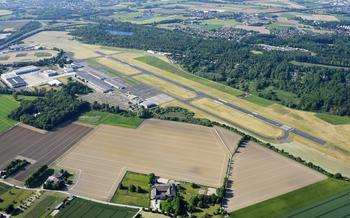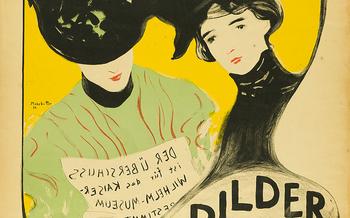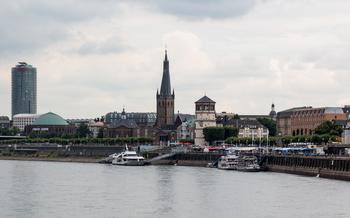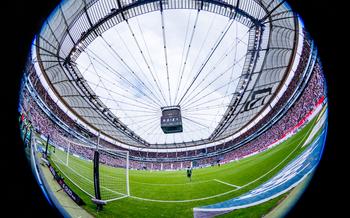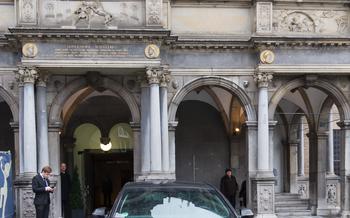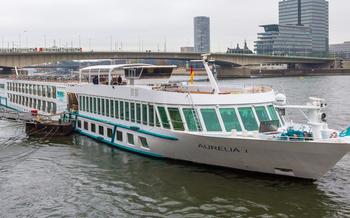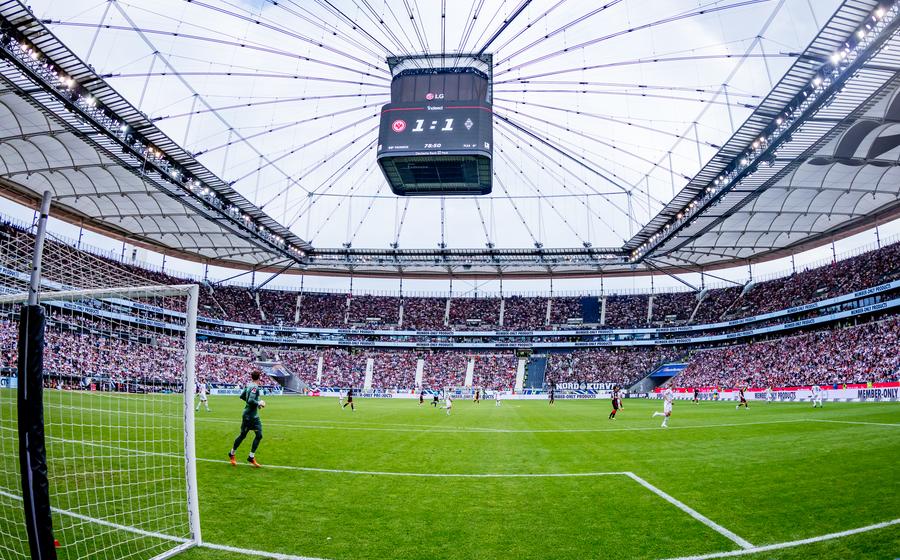
Museum Insel Hombroich Art Collection
- Museum Insel Hombroich Art Collection: A Unique Artistic Haven
- A Diverse Array of Art Exhibitions
- Immersive Art Experience in Natural Surroundings
- Guided Tours and Workshops
- Museum Café and Gift Shop
- Accessibility and Facilities
- Getting to Museum Insel Hombroich
- Accommodations and Nearby Attractions
- Museum Insel Hombroich's Impact on Art and Culture
- Sustainability Initiatives
- Historical Context and Significance
- Art and Nature in Harmony
- Insider Tip: Hidden Gems
Museum Insel Hombroich Art Collection: A Unique Artistic Haven
The Museum Insel Hombroich Art Collection is a unique and captivating artistic oasis nestled amidst the picturesque landscapes of Mönchengladbach, Germany. Its genesis can be traced back to the vision of Karl-Heinrich Müller, a passionate art collector and patron, who sought to create a harmonious fusion of art and nature. Müller's profound appreciation for the works of artists like Joseph Beuys and Blinky Palermo inspired him to establish a museum that would showcase their creations in a setting that complemented their artistic essence.
The innovative concept of a "museum island" emerged as a groundbreaking approach to presenting art. Müller envisioned an environment where visitors could immerse themselves in a serene and natural setting, allowing the artworks to interact seamlessly with their surroundings. This concept challenged traditional notions of museums as confined spaces, opening up new possibilities for artistic expression and audience engagement.
The architectural style of the museum reflects this harmonious coexistence of art and nature. Designed by renowned architects such as Erwin Heerich, Josef Paul Kleihues, and Álvaro Siza Vieira, the museum's buildings blend seamlessly into the landscape, emphasizing the interconnectedness of the two realms. The structures themselves become works of art, complementing the artistic treasures they house.
Strategically situated on a former gravel pit, the Museum Insel Hombroich is easily accessible, inviting visitors from near and far to embark on an artistic journey like no other. Its proximity to major cities like Düsseldorf and Cologne makes it a convenient destination for art enthusiasts seeking a tranquil escape into the world of creativity.
A Diverse Array of Art Exhibitions
The Museum Insel Hombroich Art Collection boasts a diverse array of art exhibitions that cater to a wide range of artistic interests. From contemporary installations to classical sculptures, the museum's collection offers a comprehensive journey through the history of art. Notable artists featured in the collection include Erwin Heerich, Gotthard Graubner, and Blinky Palermo, whose works encompass various artistic styles and movements.
In addition to the permanent collection, the museum regularly hosts temporary exhibitions that showcase the latest trends in contemporary art. These exhibitions often feature emerging artists and innovative works that challenge traditional notions of art. Special events, such as artist talks, workshops, and performances, are also organized throughout the year, providing visitors with an opportunity to engage with artists and gain insights into their creative processes.
Interactive and educational displays are strategically placed throughout the museum, inviting visitors to engage with the artworks on a deeper level. Informative panels provide historical context and artistic analysis, while interactive exhibits allow visitors to explore various techniques and concepts. These displays make the museum an ideal destination for families with children, as they encourage learning and creativity in a fun and engaging environment.
Immersive Art Experience in Natural Surroundings
At the Museum Insel Hombroich, art and nature intertwine to create a truly immersive experience. Sculptures and installations are scattered throughout the park, blending seamlessly with the surrounding landscape. Visitors can wander along the tranquil paths, discovering hidden treasures and engaging with the artwork in a unique way.
The integration of art with nature is a defining feature of the museum. Sculptures emerge from the water, blending with the reeds and grasses that line the banks. Installations are nestled among the trees, creating a sense of harmony and balance. The result is an immersive experience that invites visitors to connect with the artwork on a deeper level.
The serene atmosphere and tranquil ambiance of the park contribute to the overall experience. Visitors can escape the hustle and bustle of everyday life and immerse themselves in the beauty of art and nature. The walking trails and paths provide opportunities for exploration and contemplation, allowing visitors to fully appreciate the unique environment of the museum.
Guided Tours and Workshops
Museum Insel Hombroich offers guided tours for those who seek a deeper understanding of the art and its context. Knowledgeable guides lead visitors through the exhibits, providing insights into the creative process, artistic techniques, and the significance of the artworks. The tours are tailored to suit different interests, from general overviews to in-depth explorations of specific themes or periods.
Additionally, the museum conducts workshops and educational programs for visitors of all ages. These workshops provide hands-on experiences, allowing participants to explore their own creativity and learn new artistic skills. From painting and sculpture to printmaking and photography, there is something for everyone, whether you're a seasoned artist or simply seeking a fun and educational activity.
A highlight of the museum's educational offerings is the behind-the-scenes tours, which grant visitors exclusive access to the museum's storage facilities, conservation studios, and curatorial offices. These tours provide a glimpse into the inner workings of the museum and the meticulous care that goes into preserving and presenting the artworks.
Museum Café and Gift Shop
Within the Museum Insel Hombroich's idyllic setting, visitors can enhance their experience with a delightful culinary break at the on-site café. The café offers a carefully curated menu featuring a variety of refreshing beverages and delectable snacks. Visitors can enjoy a cup of freshly brewed coffee or tea, accompanied by homemade pastries, cakes, and other sweet treats. For those seeking a more substantial meal, there are also options for lunch and light bites.
Adjacent to the café, the museum's gift shop provides a unique opportunity for visitors to take a piece of their Museum Insel Hombroich experience home. The shop offers a diverse selection of art-related souvenirs and merchandise, including postcards, posters, books, and reproductions of artworks from the museum's collection. Visitors can also find a range of books and publications on art and culture, offering insights into the world of contemporary art and its history.
By choosing to purchase items from the gift shop, visitors not only support the museum's ongoing exhibitions and programs but also contribute to its sustainability efforts. The revenue generated from the sale of merchandise helps to fund the museum's conservation and educational initiatives, ensuring that future generations can continue to enjoy the beauty and inspiration of the Museum Insel Hombroich.
Accessibility and Facilities
The Museum Insel Hombroich is committed to providing an inclusive and accessible experience for all visitors. Wheelchair users and visitors with disabilities will find designated parking spaces close to the museum entrance, ensuring convenient access. Family-friendly amenities and activities, such as changing tables in restrooms and interactive educational displays, make the museum a welcoming environment for families with children. Restrooms are well-maintained and accessible throughout the grounds, ensuring the comfort and convenience of all visitors. Detailed accessibility information is available on the museum's website and from staff members, who are trained to assist visitors with disabilities. The museum's commitment to inclusivity extends to providing a range of resources and support services, ensuring that everyone has the opportunity to fully engage with and enjoy the museum's offerings.
Getting to Museum Insel Hombroich
Navigating to the Museum's Doorstep
Reaching Museum Insel Hombroich is a breeze, whether you're driving or relying on public transportation. Here's how to get there:
By Car: - From Düsseldorf: Take the A44 Autobahn towards Mönchengladbach. Exit at junction 29 (Mönchengladbach-Rheydt) and follow the signs to Hombroich. - From Cologne: Take the A57 Autobahn towards Neuss. Exit at junction 24 (Neuss-West) and follow the signs to Mönchengladbach. Then, follow the signs to Hombroich.
By Public Transportation: - From Düsseldorf: Take the S-Bahn line S8 to Mönchengladbach Hauptbahnhof (main train station). From there, take bus line 011 to the stop "Hombroich Kirche." - From Cologne: Take the regional train (RE 4) to Mönchengladbach Hauptbahnhof. From there, take bus line 011 to the stop "Hombroich Kirche."
Parking: - The museum offers ample parking spaces for visitors, including designated areas for buses and disabled vehicles. Parking fees apply, so be sure to bring some change or use the provided payment machines.
Insider Tip: - To avoid traffic congestion, plan your visit outside of peak hours, especially during weekends and holidays. Consider arriving early in the morning or late in the afternoon for a more tranquil experience.
Accommodations and Nearby Attractions
Mönchengladbach offers a range of comfortable accommodations to suit every budget and preference. From cozy bed and breakfasts to modern hotels, there are numerous options within easy reach of the Museum Insel Hombroich. For a truly immersive experience, consider staying at the Museum Insel Hombroich Guest House, which offers unique accommodations surrounded by the park's serene ambiance.
Beyond the museum, Mönchengladbach boasts a wealth of historical and cultural attractions. Explore the impressive Abteiberg Museum, renowned for its collection of modern and contemporary art. Delve into the city's rich textile history at the Museum of Textile Art. Take a leisurely stroll through the picturesque Old Town, where charming medieval buildings line cobblestone streets.
For a day trip, venture to the nearby city of Düsseldorf, known for its world-class art scene. Admire the masterpieces at the Kunstpalast Museum or stroll along the picturesque Rhine River. Cologne, with its iconic cathedral and numerous museums, is another worthwhile destination.
Plan a comprehensive itinerary to make the most of your visit to the Museum Insel Hombroich and the surrounding area. Allow ample time to immerse yourself in the museum's art collection and explore the tranquil park. Set aside a day or two to discover Mönchengladbach's other cultural attractions, and consider a day trip to a neighboring city to further enrich your experience.
Museum Insel Hombroich's Impact on Art and Culture
Museum Insel Hombroich has garnered widespread recognition and accolades for its unique concept and innovative approach to art. The museum has been lauded for its groundbreaking integration of art with nature, which has set a new standard for contemporary art exhibitions. Its commitment to sustainability and community engagement has also earned it praise and respect.
The museum has been featured in numerous publications and media outlets, including The New York Times, The Guardian, and Artforum. It has also received prestigious awards, such as the German Museum Prize in 2009 and the European Museum of the Year Award in 20
Museum Insel Hombroich's influence extends beyond the realm of art and culture. It has played a significant role in revitalizing the local community and promoting cultural tourism in the region. The museum has also been instrumental in fostering collaboration and exchange between artists, curators, and institutions from around the world.
Through its innovative exhibitions, educational programs, and community initiatives, Museum Insel Hombroich has made a lasting impact on the art world and beyond. It continues to be a beacon of creativity, sustainability, and cultural exchange, inspiring and engaging visitors from all walks of life.
Sustainability Initiatives
Museum Insel Hombroich is committed to minimizing its environmental impact and promoting sustainability in its operations. The museum has adopted a range of environmentally-friendly practices to reduce its carbon footprint and contribute to a greener future.
Renewable energy sources, such as solar panels and geothermal heating, are utilized to power the museum's facilities. Energy-efficient lighting and heating systems have been installed to minimize energy consumption. The museum also actively promotes recycling and waste reduction, with designated recycling bins placed throughout the premises.
Sustainable landscaping and gardening practices are employed to maintain the museum's natural surroundings. Native plants and low-water landscaping techniques are used to conserve water and reduce the need for pesticides and fertilizers. The museum's commitment to sustainability extends beyond its own operations. It also collaborates with local organizations and initiatives to promote environmental awareness and sustainability in the community.
Through these efforts, Museum Insel Hombroich demonstrates its dedication to preserving the natural beauty of its surroundings and promoting a sustainable approach to art and culture. Visitors to the museum can not only enjoy the diverse art collection but also appreciate its commitment to environmental responsibility.
Historical Context and Significance
The history of the Hombroich area is intertwined with the rise and fall of the textile industry in Mönchengladbach. Once a thriving hub of textile production, the city faced economic decline in the late 20th century. The establishment of Museum Insel Hombroich played a crucial role in revitalizing the area and preserving its cultural heritage.
The museum's founder, Karl-Heinrich Müller, envisioned a space that would not only showcase contemporary art but also serve as a tribute to the region's industrial past. The site chosen for the museum, a former brickyard, held symbolic significance as a reminder of Mönchengladbach's industrial roots. Müller transformed the abandoned brick kilns and factory buildings into unique exhibition spaces, breathing new life into the forgotten industrial landscape.
Museum Insel Hombroich's commitment to preserving local heritage extends beyond the physical structures. The museum's collection includes works of art that explore the region's industrial history and its impact on the lives of its inhabitants. Through these artworks, visitors gain insights into the social, economic, and cultural transformations that shaped Mönchengladbach over the centuries.
The museum's efforts to preserve and celebrate the region's cultural heritage have been widely recognized. In 2001, Museum Insel Hombroich received the prestigious Europa Nostra Award for its outstanding contribution to the conservation of European cultural heritage. The museum's success in revitalizing the Hombroich area has served as an inspiration for other cities seeking to transform their industrial past into a vibrant cultural future.
Art and Nature in Harmony
At the Museum Insel Hombroich, art and nature are not merely coexisting elements; they form a profound and harmonious union. The founder, Karl-Heinrich Müller, envisioned a space where art and nature could intermingle and inspire each other. This philosophy is evident throughout the museum grounds, where sculptures and installations are carefully positioned amidst lush greenery, tranquil ponds, and winding paths.
This symbiotic relationship between art and nature creates a unique and immersive experience for visitors. As they stroll through the park, they encounter sculptures that seem to emerge from the earth itself, installations that blend seamlessly with the surrounding landscape, and artworks that draw inspiration from the natural world. The interplay between art and nature stimulates the senses, invites contemplation, and encourages visitors to appreciate the beauty and interconnectedness of both realms.
Whether it's a towering sculpture that mirrors the grandeur of a tree or a delicate installation that captures the essence of a flower, the artworks at Museum Insel Hombroich invite visitors to engage with the natural world in new and profound ways. The museum's unique setting provides a sanctuary for both art and nature, offering visitors a chance to experience the transformative power of their harmonious union.
Insider Tip: Hidden Gems
Beyond the main attractions, Museum Insel Hombroich holds hidden gems waiting to be discovered by curious visitors. Venture off the beaten path to find secluded corners and tranquil spots perfect for contemplation and reflection. Look for the small chapel nestled among the trees, where you can find a moment of serenity and spiritual connection. Amidst the sculptures and installations, keep an eye out for lesser-known artworks that may not be immediately noticeable but offer unique perspectives and artistic insights. These hidden treasures often reveal the depth and diversity of the museum's collection.
For photography enthusiasts, the museum grounds are a treasure trove of captivating scenes. Capture the interplay of light and shadow as it dances across the sculptures, creating ever-changing compositions. Discover unique angles and perspectives that showcase the harmonious relationship between art and nature. Remember to respect the tranquility of the environment and fellow visitors as you explore these hidden gems, ensuring that everyone can enjoy the magic of Museum Insel Hombroich.

